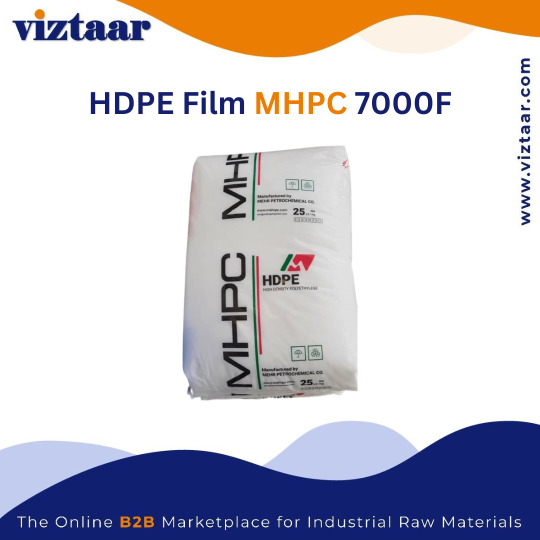#mhpc7000f
Explore tagged Tumblr posts
Text
HDPE Film MHPC 7000F

In the world of plastics, one material stands out for its remarkable versatility, durability, and eco-friendly characteristics: High-Density Polyethylene (HDPE). HDPE has emerged as a game-changer in various industries, revolutionizing packaging, construction, automotive, and beyond. Its unique properties and environmental benefits have made it a popular choice for manufacturers and consumers alike.
Understanding HDPE
HDPE is a thermoplastic polymer made from petroleum. It is produced through a high-pressure process that involves the polymerization of ethylene monomers. The resulting material is a tough, rigid plastic with a high strength-to-density ratio. HDPE is known for its exceptional chemical resistance, impact resistance, and excellent moisture barrier properties.
Versatility in Applications
The versatility of HDPE has led to its widespread adoption across diverse industries. In the packaging sector, HDPE is commonly used for bottles, containers, caps, and closures due to its resistance to chemicals, moisture, and impact. Its lightweight nature and durability make it a preferred choice for transporting liquids and goods.
The construction industry relies on HDPE for its piping systems, thanks to its exceptional strength and corrosion resistance. HDPE pipes are long-lasting, flexible, and resistant to chemicals, making them ideal for underground water and gas supply networks. Additionally, HDPE's UV resistance allows it to be used for outdoor applications, such as playground equipment, road barriers, and geothermal heat exchangers.
In the automotive sector, HDPE finds applications in fuel tanks, battery casings, and interior trims. Its ability to withstand extreme temperatures, impact, and chemical exposure make it a reliable choice for automotive manufacturers seeking lightweight and durable components.
Environmental Benefits
HDPE stands out as an environmentally friendly material, contributing to the ongoing sustainability efforts in the plastic industry. Its recyclability and reusability help reduce waste and limit the environmental impact of plastic production. HDPE can be melted and molded into new products multiple times without any significant loss in performance or quality.
Compared to other plastics, HDPE has a lower carbon footprint. Its lightweight nature reduces transportation emissions, and its durability ensures a longer lifespan, reducing the need for frequent replacements. Furthermore, HDPE's chemical resistance makes it an ideal choice for storing and transporting a wide range of products, minimizing the risk of leaks and contamination.
Promoting a Circular Economy
The rise of HDPE has paved the way for the development of a circular economy in the plastic industry. Companies are actively exploring ways to collect, recycle, and repurpose HDPE products. Through recycling programs, used HDPE materials can be transformed into new products, reducing the demand for virgin plastic and conserving natural resources.
The Future of HDPE
As the demand for sustainable materials continues to grow, HDPE is expected to play a significant role in shaping the future of the plastic industry. Ongoing research and technological advancements aim to further improve the properties of HDPE, such as enhancing its impact resistance, expanding its temperature range, and exploring new applications.
In addition, innovative manufacturing processes and design approaches are being developed to minimize waste during production and enhance the recyclability of HDPE products. These initiatives will contribute to the overall goal of creating a more sustainable and environmentally conscious plastic industry.
0 notes